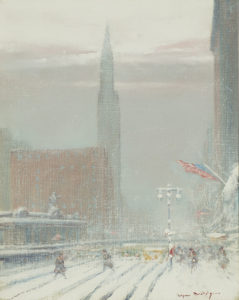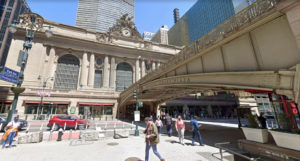
Johann Berthelsen's 42nd Street Looking East Past Grand Central Station
This week’s Architecture in Art features a National Landmark and one of the most visited spaces in the world – Grand Central Station. It also happened to be a favorite of Johann Berthelsen, as he repeatedly painted the structure throughout his career.
Grand Central Station, or Grand Central Terminal, covers 44 acres of midtown Manhattan at 42nd street and Park Avenue. While it’s the 3rd busiest station in North America, it boasts 44 platforms - more than any station in the world - and they’re all underground!
The location was originally developed as Grand Central Depot which opened in 1871. By the end of the 1800s, even after an expansion, the depot was at capacity carrying 11.5 million riders annually… and it was still using steam engines. The buildup of soot was a contributing factor in a catastrophic crash in 1902, when 15 died and 30 were injured. After that, plans were made to tear the entire structure down and electrify tracks within tunnels - from 1903 to 1913, the station was demolished and rebuilt without disrupting train service... all while excavating 3.2 million cubic yards of ground at depths of up to ten stories!
Another more subtle feature of the artwork is the Park Avenue Viaduct – an elevated roadway that was added in 1919. Prior to its construction, Grand Central split Park Avenue into two sections – North and South. The viaduct allowed traffic to flow up and around the station (north and south), and unobstructed underneath along 42nd Street (east and west). It’s one of the few places in the city where the road itself is a landmark.
The new terminal, along with easier access to the north, allowed the area to flourish. The surrounding neighborhood became known as “Terminal City,” the most desirable commercial location in New York… that included new developments like The Chrysler Building (which can be seen in the distance) and The Waldorf Astoria. It’s safe to say Grand Central Terminal had an immeasurable impact on making New York into the city it is today.

